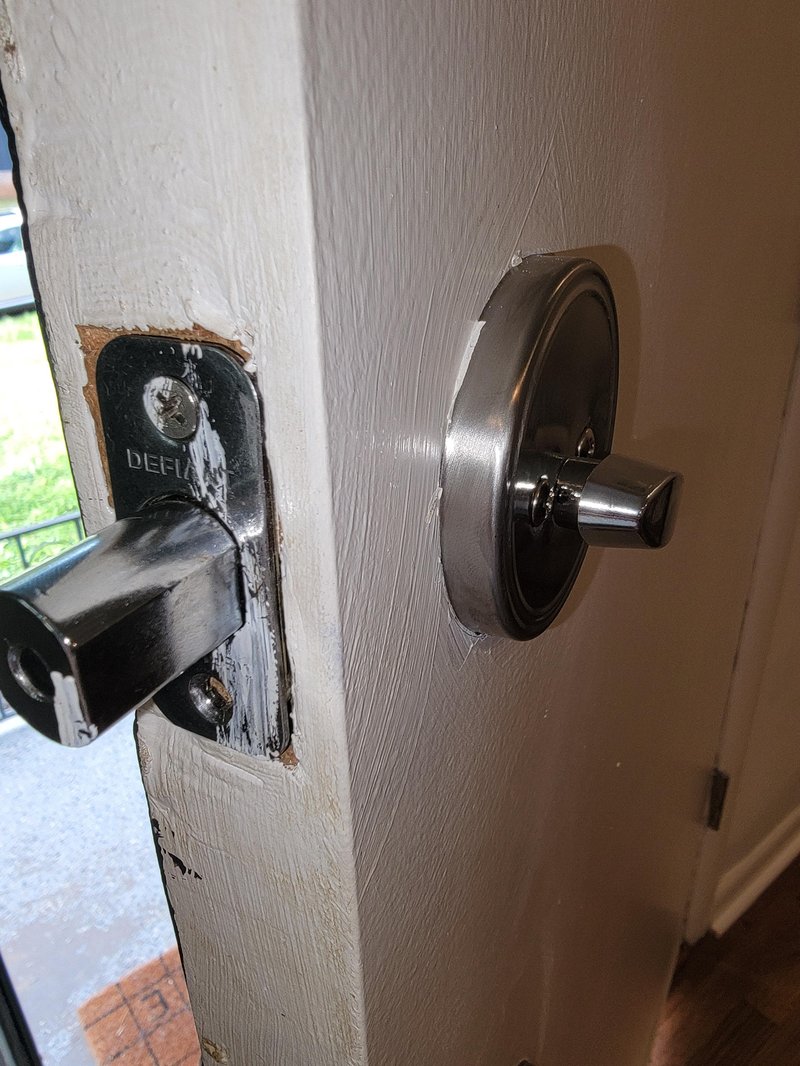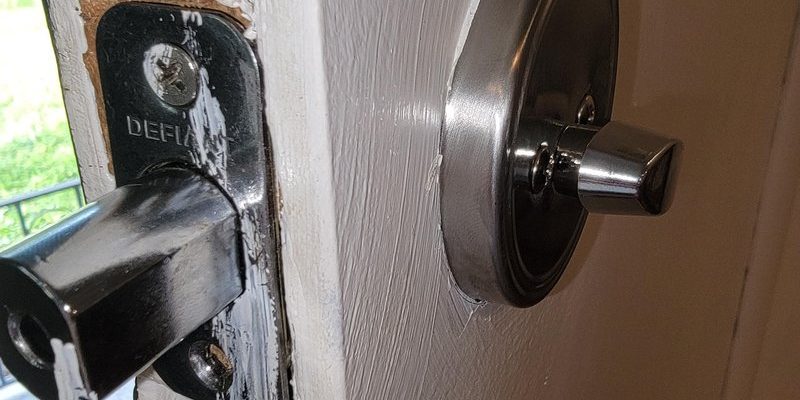
Honestly, fixing a stuck deadbolt isn’t always as simple as spraying some WD-40 and hoping for the best. If you’re dealing with a Kwikset or Schlage deadbolt (the two big names you’ll see on most American front doors), there are a few universal troubleshooting steps that’ll get you out of the woods in most cases. But you’ll still want a careful approach—forcing things can damage the lock or even your door.
Let me explain what’s going on when a deadbolt refuses to lock, why it happens, and exactly what you can do about it—no locksmith experience required. Whether you’ve got a classic single-cylinder Kwikset, a Schlage keypad model, or even an off-brand deadbolt, the steps are mostly the same. Grab a Phillips screwdriver, some patience, and let’s dig in.
What Causes a Deadbolt to Get Stuck Unlocked?
You might be wondering: Why is my deadbolt stuck in the unlocked position to begin with? Usually, it’s not just bad luck—there’s a handful of common culprits. Sometimes, it’s something as simple as dust and grime building up inside the mechanism. Over time, even the smoothest locksmith-made locks will get sticky if you never clean or lubricate them.
But here’s the thing: a deadbolt relies on a lot of moving parts, all working together in tight spaces. If just one tiny piece falls out of sync—like a misaligned strike plate, a worn-out spring, or a bent tailpiece—the bolt can freeze up or fail to slide out when you turn the key or thumbturn. If you’ve been using a universal remote or keypad to lock your door (on smart models), battery issues or a code malfunction can also prevent the bolt from engaging.
*Keys themselves* play a role, too. If you’ve got a worn-down key, a cloned aftermarket key, or one that’s slightly bent, it might turn without actually moving the mechanism inside. And if you live in a place that gets cold, moisture can freeze inside the lock and cause it to jam—especially on older deadbolts.
- Dirt and debris stuck in the lock cylinder
- Misaligned strike plate or latch—the bolt can’t move into the frame
- Worn or broken internal parts, like the tailpiece or springs
- Battery/power issues or code glitches (for smart locks)
- Physical damage, like a warped door or bent key
Knowing what you’re up against helps you troubleshoot faster—and keeps you from accidentally making things worse.
How to Inspect a Stuck Deadbolt Before Repairing
Before you grab your tools, take a deep breath and inspect the deadbolt. Rushing in without a plan is how you end up with extra screws or a lock that never goes back together quite right. Look closely at how the lock behaves when you try to operate it.
For starters, check the *thumbturn* or the key: Does it spin freely, or is there resistance? Does the bolt move at all, or is it completely stuck inside the door? If you have a smart deadbolt (like a Schlage Encode or a Kwikset Halo), try using the keypad or remote to see if the motor tries to engage. Sometimes, a low battery will make the bolt only move partway.
Next, open the door and try the lock with the door open. This simple trick rules out alignment problems between your deadbolt and the door frame. If the bolt moves when the door is open, your lock is probably fine—the issue is in the strike plate or door alignment. If it’s still stuck unlocked, then the problem is inside the mechanism itself.
Take a look at the screws on the interior plate. Loose or missing screws are a classic cause of trouble, especially if your lock feels “wobbly” or you can see parts shifting as you turn the key. A flashlight will help you see inside the keyway or around the bolt, so you can spot any obvious blockages or damage.
Start simple. Most deadbolts only need a screwdriver and patience for a quick repair—no fancy tools or expensive locksmiths required.
Step-by-Step Guide to Repairing a Stuck Unlocked Deadbolt
Alright, let’s get your deadbolt working again. Here’s a slow, detailed walkthrough that works for most Kwikset, Schlage, and similar residential deadbolts—both mechanical and smart.
- Remove the deadbolt from the door: Use a Phillips screwdriver to take out the mounting screws on the interior plate. Gently pull both sides off the door. If you have a smart deadbolt, disconnect the battery or power before continuing.
- Inspect the internal components: Look for broken, loose, or obviously worn parts (like the tailpiece, springs, or cylinder). The tailpiece should move smoothly when you turn the key or thumbturn.
- Check for debris: Blow out any dust inside the lock body using compressed air. Use a cotton swab and a dab of graphite (not oil-based) lubricant to clean the cylinder.
- Test the bolt itself: With the deadbolt out of the door, see if the bolt slides in and out when you turn the thumbturn. If it sticks, the mechanism is jammed—look for bent or snapped pieces and replace as needed.
- Reassemble and reinstall: Put everything back together, tightening the screws firmly but not too tight. Test the lock before fully screwing it in to make sure it moves smoothly.
*For smart locks*, pop in fresh batteries and try resetting or re-syncing the remote, code, or app. Most models have a small reset button inside the battery compartment—check your manual for exact instructions.
If the deadbolt stays stuck, the internal mechanism may be beyond simple repair. At that point, you’re usually better off replacing the lock, especially if parts are cracked or bent.
Fixing Alignment and Strike Plate Issues
Here’s the thing: Even if your deadbolt works fine off the door, it can get stuck unlocked if the bolt can’t slide cleanly into the frame. Strike plate and door alignment problems are super common, especially in older homes or places with shifting foundations.
First, look at the bolt and the hole in the door frame. When the door is closed, does the deadbolt line up with the strike plate? Sometimes, it’s just a hair off—the bolt hits wood instead of sliding into the hole. You can test this with the door open: If the deadbolt moves smoothly, it’s definitely an alignment issue.
If things are just slightly off, try loosening the strike plate screws and shifting the plate a little up, down, or sideways. Tighten them while holding the plate in the new position, then test the deadbolt again. For bigger gaps, you may need to fill and drill new screw holes so the strike plate sits where the bolt naturally lines up.
If the hole in the frame is too small or shallow, use a chisel to gently widen or deepen it. Don’t go wild—remove a little wood at a time and keep testing the deadbolt until it slides in easily. Some folks use a bit of colored chalk on the bolt to show where it’s rubbing (a handy trick for visual learners).
Nine times out of ten, fixing the strike plate is all it takes to restore a “dead” deadbolt to full reliability.
How to Lubricate and Maintain Your Deadbolt
Repairing is only half the battle—keeping your deadbolt in good shape saves you hassle (and money) down the road. Most people forget to maintain their locks, but a little care goes a long way. Once your deadbolt slides and locks smoothly, it’s worth showing it some love.
Use a graphite-based lubricant or a lock-specific spray (like Tri-Flow). Avoid regular oil or WD-40—these attract dust and can gum up the works over time. Insert the key and move it in and out, turning gently to spread the graphite through the pins and cylinder. If you have a smart deadbolt, don’t forget the mechanical parts—motors and electronics aren’t a substitute for regular lubrication.
Every six months or so, check all visible screws and tighten any that are loose. Wipe the exterior clean with a damp cloth, avoiding harsh cleaners that might damage the finish or electronics. For keypad models, keep the contacts and buttons free of grime to avoid code glitches.
*If your deadbolt starts feeling stiff or “gritty” again, repeat the cleaning and lubrication steps before the problem gets worse. You’ll thank yourself the next time you come home late and tired.*
When to Replace Instead of Repair
Sometimes a deadbolt just can’t be saved. If you’ve tried all the troubleshooting steps—cleaning, lubricating, tightening, adjusting—and the lock still won’t engage, it may be time for a new one. Broken or missing internal pieces, warped cylinders, and stripped screws all mean your lock isn’t reliable anymore.
Here’s where you might consider upgrading. If you’re still using an old mechanical Kwikset, maybe it’s time for a smart lock with a keypad and remote syncing options. Or maybe you want a new Schlage with added security features. The installation is usually just as simple as repairing—pop out the old, slot in the new, and pair your remotes or set your codes.
Don’t push a bad lock to its limits. Security isn’t something to gamble with—especially if you’re worried about someone getting in while your deadbolt is stuck unlocked.
If your deadbolt feels “off” even after repair, trust your gut and look into a fresh replacement.
Troubleshooting Smart Deadbolts: Sync, Code, and Battery Issues
Modern deadbolts come with their own headaches—especially those with remotes, keypads, or Bluetooth sync. If your Kwikset or Schlage smart deadbolt isn’t locking or seems to be stuck unlocked, check a few simple things first.
- Battery: Low, dying, or corroded batteries are a top cause of deadbolt malfunctions. Swap in a new set (usually AA or 9V) and see if the problem goes away.
- Remote or keypad sync: Sometimes, the lock loses its pairing with your phone, remote, or smart home hub. Try re-syncing or resetting the connection (check your manual for brand-specific steps).
- Code issues: If the lock isn’t responding to your code, try a hard reset. This usually means holding down a tiny button inside the battery compartment for 5–10 seconds.
If nothing works, most smart deadbolts let you use a standard key as a backup—so keep yours handy. And if you’re ever completely locked out of the code or sync features, a locksmith can usually reset things with the proper tools.
Final Thoughts: Keep Your Deadbolt Reliable and Secure
Dealing with a deadbolt stuck in the unlocked position is annoying, but it doesn’t have to be a disaster. Most fixes—from cleaning and realigning to a quick reset—are within reach for a patient DIYer. Whether you’ve got a classic Kwikset or a fancy Schlage keypad, paying attention to small details (like screw tightness, clean keyways, and battery health) makes all the difference.
Remember, a working deadbolt isn’t just about convenience—it’s about feeling safe. Regular checks, a little maintenance, and not ignoring those “something’s off” moments will keep your doors secure and your mind at ease. And if your repair doesn’t do the trick, don’t hesitate to invest in a new lock. Sometimes, peace of mind is worth a quick hardware upgrade.
